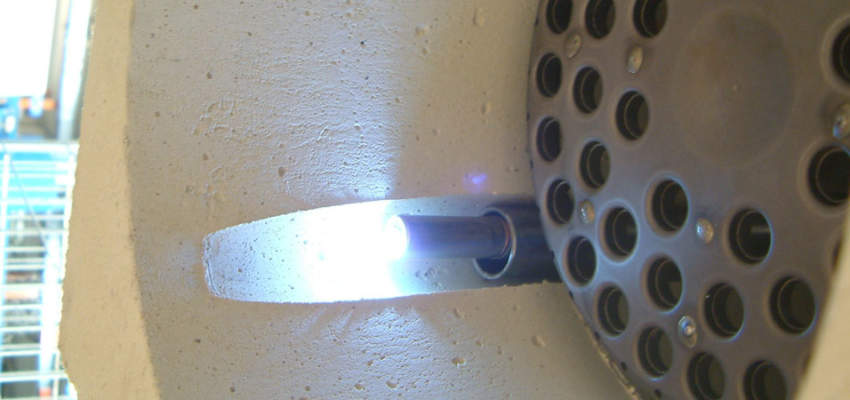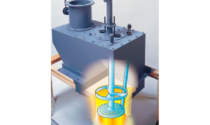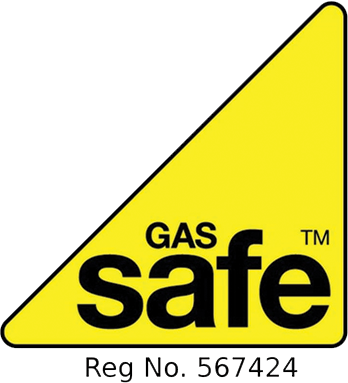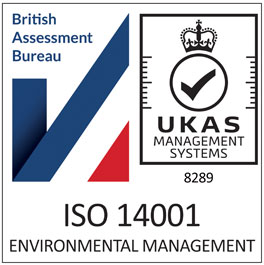Lanemark HC gas fired, round flame burners provide the process heat required to initiate the reaction in down fired steam reforming applications, which ‘reforms’ the reformer feed stock – typically natural gas or naphtha – resulting in the production of methanol.
The burners’ stable, tightly controlled flame profile allows high calorific value fuels such as natural gas or refinery gas to be fired either on their own or in combination with purge gas, tail gas or synthesis gas – which can contain high levels of hydrogen and methane plus a significant quantity of inerts such as carbon dioxide and nitrogen. Low NOx, CO and noise emissions combine with high levels of flexibility to ensure burner stability under all operating conditions.
Auxiliary burners can also be provided, typically mounted between the radiant section and the convection section of the furnace. These provide additional heat to the flue gas after the radiant section/before the convection section to maintain process steam production through the reformer catalyst life cycle. Importantly, these burners can be sized larger than the main arch burners, reducing capital and installation costs.
High combustion air temperatures and varying furnace pressure conditions can be accommodated within the burner design while burner ignition can be by portable spark ignitor, portable pilot or, if the client’s start up philosophy requires, then by a fixed manual or automatic pilot. A single Lanemark ‘Thermimax Matrix’ head can accommodate all fuel gases that can be available for this application either as single fuels or as combined/mixed units upstream of the burners in any available proportion.
The Lanemark ‘Thermimax Matrix’ burner head produces both fuel rich and fuel lean zones resulting in low NOx emissions without impacting on turndown, stability or CO emissions. Low noise emissions result from low to medium combustion air pressure drop and the intimate mixing properties of the matrix design – avoiding the need for external acoustic insulation.
Flame lengths of less than 3 m with diameters of under 0.7 m, low excess air operation at design/ normal burner loads and high excess air at low load, start up, warm standby and general plant upset conditions all mean that specific site requirements can be met by Lanemark burners.


 HC
HC



